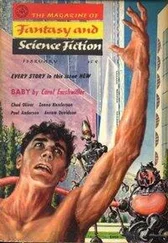Oliver Sacks - The man who mistook his wife for a hat
Здесь есть возможность читать онлайн «Oliver Sacks - The man who mistook his wife for a hat» весь текст электронной книги совершенно бесплатно (целиком полную версию без сокращений). В некоторых случаях можно слушать аудио, скачать через торрент в формате fb2 и присутствует краткое содержание. Жанр: Психология, на английском языке. Описание произведения, (предисловие) а так же отзывы посетителей доступны на портале библиотеки ЛибКат.
- Название:The man who mistook his wife for a hat
- Автор:
- Жанр:
- Год:неизвестен
- ISBN:нет данных
- Рейтинг книги:5 / 5. Голосов: 1
-
Избранное:Добавить в избранное
- Отзывы:
-
Ваша оценка:
- 100
- 1
- 2
- 3
- 4
- 5
The man who mistook his wife for a hat: краткое содержание, описание и аннотация
Предлагаем к чтению аннотацию, описание, краткое содержание или предисловие (зависит от того, что написал сам автор книги «The man who mistook his wife for a hat»). Если вы не нашли необходимую информацию о книге — напишите в комментариях, мы постараемся отыскать её.
The man who mistook his wife for a hat — читать онлайн бесплатно полную книгу (весь текст) целиком
Ниже представлен текст книги, разбитый по страницам. Система сохранения места последней прочитанной страницы, позволяет с удобством читать онлайн бесплатно книгу «The man who mistook his wife for a hat», без необходимости каждый раз заново искать на чём Вы остановились. Поставьте закладку, и сможете в любой момент перейти на страницу, на которой закончили чтение.
Интервал:
Закладка:
Luria did, finally, write some of these papers, in the last months of his life, when mortally ill. He never saw their publication, nor were they published in Russia. He sent them to R. L. Gregory in England, and they will appear in Gregory's forthcoming Oxford Companion to the Mind.
Inner difficulties and outer difficulties match each other here. It is not only difficult, it is impossible, for patients with certain right-hemisphere syndromes to know their own problems-a peculiar and specific 'anosagnosia', as Babinski called it. And it is singularly difficult, for even the most sensitive observer, to picture the inner state, the 'situation', of such patients, for this is almost unimaginably remote from anything he himself has ever known. Left-hemisphere syndromes, by contrast, are relatively easily imagined. Although right-hemisphere syndromes are as common as left-hemisphere syndromes-why should they not be?-we will find a thousand descriptions of left-hemisphere syndromes in the neurological and neuropsychological literature for every description of a right-hemisphere syndrome. It is as if such syndromes were somehow alien to the whole temper of neurology. And yet, as Luria says, they are of the most fundamental importance. So much so that they may demand a new sort of neurology, a 'per-sonalistic', or (as Luria liked to call it) a 'romantic', science; for the physical foundations of the persona, the self, are here revealed for our study. Luria thought a science of this kind would be best introduced by a story-a detailed case-history of a man with a profound right-hemisphere disturbance, a case-history which would at once be the complement and opposite of 'the man with a shattered world.' In one of his last letters to me he wrote: 'Publish
such histories, even if they are just sketches. It is a realm of great wonder.' I must confess to being especially intrigued by these disorders, for they open realms, or promise realms, scarcely imagined before, pointing to an open and more spacious neurology and psychology, excitingly different from the rather rigid and mechanical neurology of the past.
It is, then, less deficits, in the traditional sense, which have engaged my interest than neurological disorders affecting the self. Such disorders may be of many kinds-and may arise from excesses, no less than impairments, of function-and it seems reasonable to consider these two categories separately. But it must be said from the outset that a disease is never a mere loss or excess- that there is always a reaction, on the part of the affected organism or individual, to restore, to replace, to compensate for and to preserve its identity, however strange the means may be: and to study or influence these means, no less than the primary insult to the nervous system, is an essential part of our role as physicians. This was powerfully stated by Ivy McKenzie:
For what is it that constitutes a 'disease entity' or a 'new disease'? The physician is concerned not, like the naturalist, with a wide range of different organisms theoretically adapted in an average way to an average environment, but with a single organism, the human subject, striving to preserve its identity in adverse circumstances.
This dynamic, this 'striving to preserve identity', however strange the means or effects of such striving, was recognised in psychiatry long ago-and, like so much else, is especially associated with the work of Freud. Thus, the delusions of paranoia were seen by him not as primary but as attempts (however misguided) at restitution, at reconstructing a world reduced by complete chaos. In precisely the same way, Ivy McKenzie wrote:
The pathological physiology of the Parkinsonian syndrome is the study of an organised chaos, a chaos induced in the first instance by destruction of important integrations, and reorganised on an unstable basis in the process of rehabilitation.
As Awakenings was the study of 'an organised chaos' produced by a single if multiform disease, so what now follows is a series of similar studies of the organised chaoses produced by a great variety of diseases.
In this first section, 'Losses', the most important case, to my mind, is that of a special form of visual agnosia: 'The Man Who Mistook His Wife for a Hat'. I believe it to be of fundamental importance. Such cases constitute a radical challenge to one of the most entrenched axioms or assumptions of classical neurology-in particular, the notion that brain damage, any brain damage, reduces or removes the 'abstract and categorical attitude' (in Kurt Goldstein's term), reducing the individual to the emotional and concrete. (A very similar thesis was made by Hughlings Jackson in the 1860s.) Here, in the case of Dr P., we see the very opposite of this-a man who has (albeit only in the sphere of the visual) wholly lost the emotional, the concrete, the personal, the 'real' . . . and been reduced, as it were, to the abstract and the categorical, with consequences of a particularly preposterous kind. What would Hughlings Jackson and Goldstein have said of this? I have often in imagination, asked them to examine Dr P., and then said, 'Gentlemen! What do you say now?'
1
The Man Who Mistook His Wife for a Hat
Dr P. was a musician of distinction, well-known for many years as a singer, and then, at the local School of Music, as a teacher. It was here, in relation to his students, that certain strange problems were first observed. Sometimes a student would present himself, and Dr P. would not recognise him; or, specifically, would not recognise his face. The moment the student spoke, he would be recognised by his voice. Such incidents multiplied, causing embarrassment, perplexity, fear-and, sometimes, comedy. For not only did Dr P. increasingly fail to see faces, but he saw faces when there were no faces to see: genially, Magoo-like, when in the street he might pat the heads of water hydrants and parking meters, taking these to be the heads of children; he would amiably address carved knobs on the furniture and be astounded when they did not reply. At first these odd mistakes were laughed off as jokes, not least by Dr P. himself. Had he not always had a quirky sense of humour and been given to Zen-like paradoxes and jests? His musical powers were as dazzling as ever; he did not feel ill-he had never felt better; and the mistakes were so ludicrous-and so ingenious-that they could hardly be serious or betoken anything serious. The notion of there being 'something the matter' did not emerge until some three years later, when diabetes developed. Well aware that diabetes could affect his eyes, Dr P. consulted an ophthalmologist, who took a careful history and examined his eyes closely. 'There's nothing the matter with your eyes,' the doctor concluded. 'But there is trouble with the visual parts of your brain.
You don't need my help, you must see a neurologist.' And so, as a result of this referral, Dr P. came to me.
It was obvious within a few seconds of meeting him that there was no trace of dementia in the ordinary sense. He was a man of great cultivation and charm who talked well and fluently, with imagination and humour. I couldn't think why he had been referred to our clinic.
And yet there was something a bit odd. He faced me as he spoke, was oriented towards me, and yet there was something the matter-it was difficult to formulate. He faced me with his ears, I came to think, but not with his eyes. These, instead of looking, gazing, at me, 'taking me in', in the normal way, made sudden strange fixations-on my nose, on my right ear, down to my chin, up to my right eye-as if noting (even studying) these individual features, but not seeing my whole face, its changing expressions, 'me', as a whole. I am not sure that I fully realised this at the time-there was just a teasing strangeness, some failure in the normal interplay of gaze and expression. He saw me, he scanned me, and yet . . .
Читать дальшеИнтервал:
Закладка:
Похожие книги на «The man who mistook his wife for a hat»
Представляем Вашему вниманию похожие книги на «The man who mistook his wife for a hat» списком для выбора. Мы отобрали схожую по названию и смыслу литературу в надежде предоставить читателям больше вариантов отыскать новые, интересные, ещё непрочитанные произведения.
Обсуждение, отзывы о книге «The man who mistook his wife for a hat» и просто собственные мнения читателей. Оставьте ваши комментарии, напишите, что Вы думаете о произведении, его смысле или главных героях. Укажите что конкретно понравилось, а что нет, и почему Вы так считаете.












